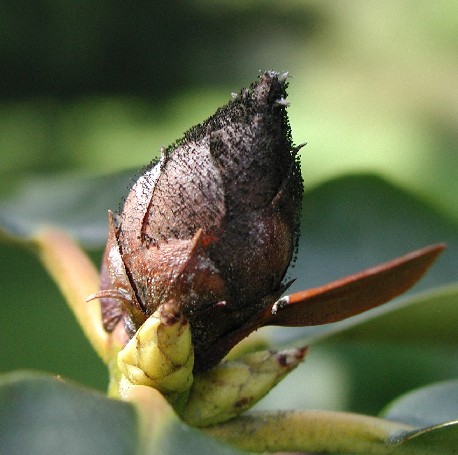Rhododendron bud and twig blight is caused by a fungus, Seifertia azaleae (Peck) Partridge & Morgan-Jones, (Pycnostysanus azaleae (Peck) E. Mason = Briosia azaleae (Peck) Dearn). The flower buds turn brown and do not open in the spring. They are later covered by black fruiting structures called coremia the year after infection.
The rhododendron leafhopper, Graphocephala fennahi, (image) is implicated in these infections by some researchers. It lays its eggs in rhododendron buds in the fall allowing entry of the fungus into these sites.
Management: Removal of infected buds which act as potential inoculum sources is the suggested remedy.
For more information and images on the disease and hosts, see the on-line article by Glawe and Hummel (2006) at Pacific Northwest Fungi.
Rhododendron bud covered with coremia
Photo: Rosetta
Page last modified 5/8/09

